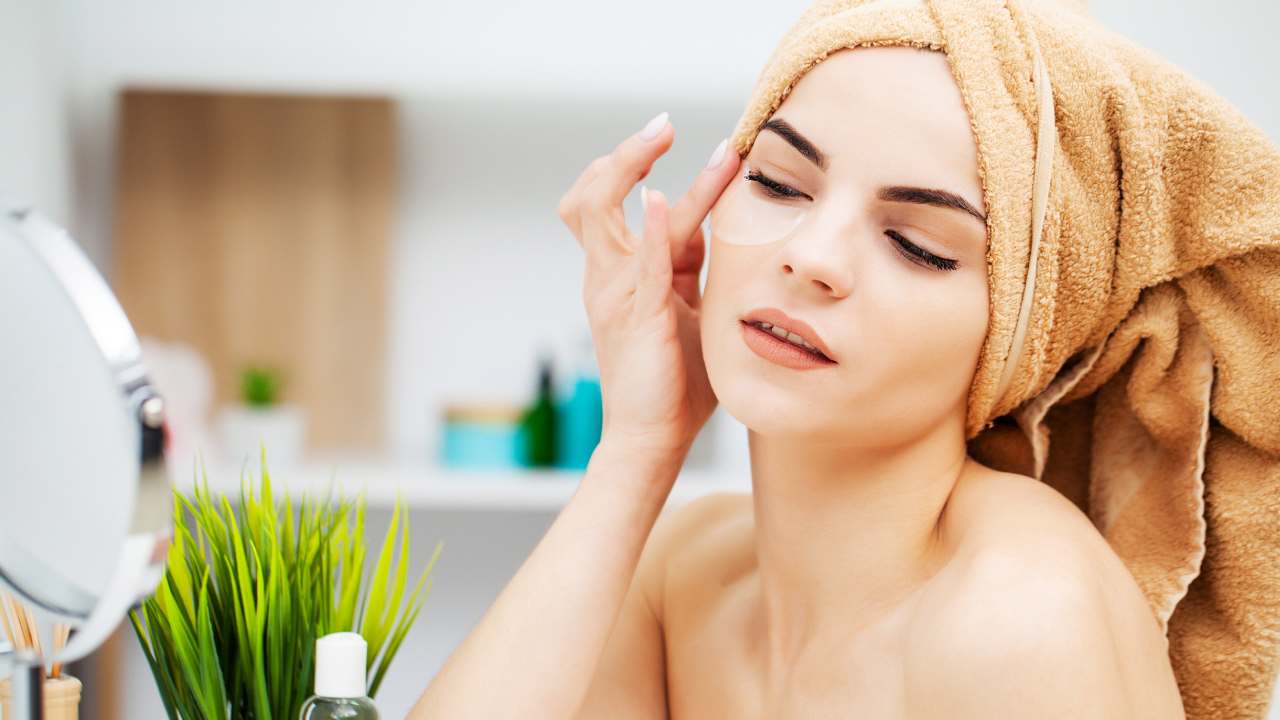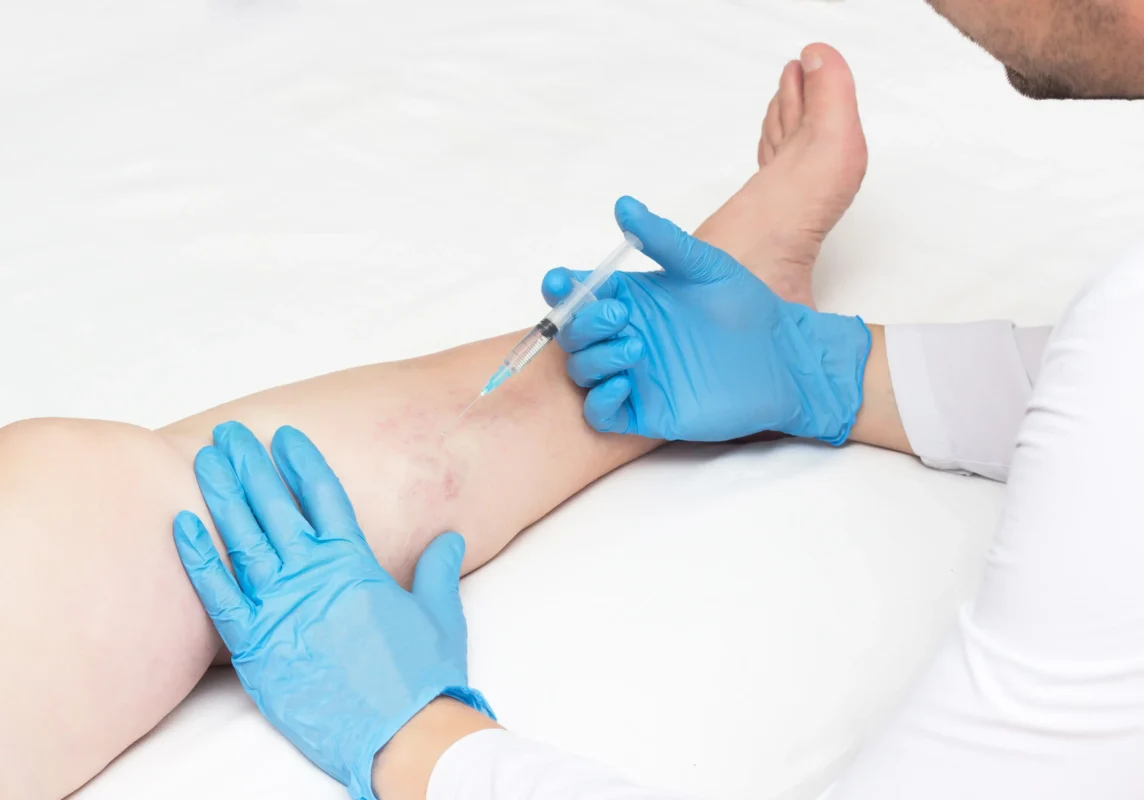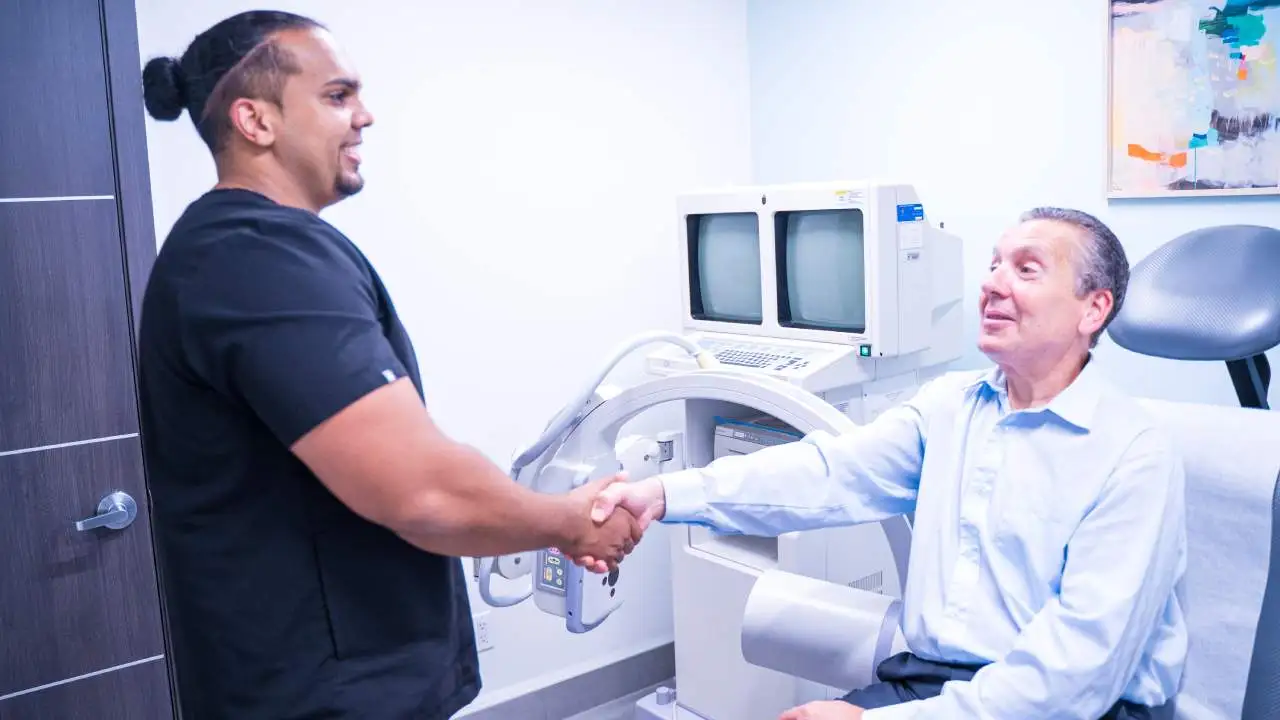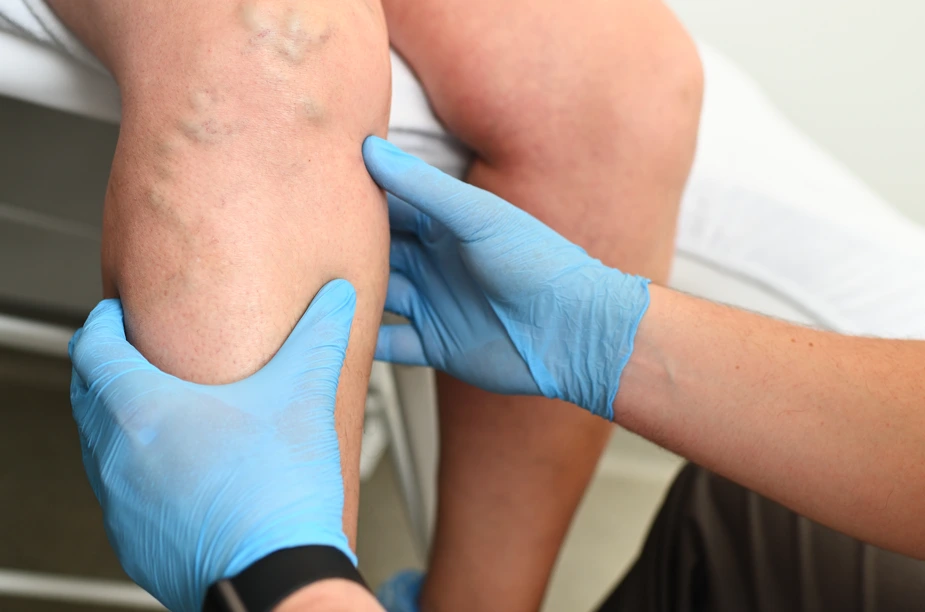Waking up with a swollen face can leave you feeling self-conscious. Maybe you’ve tried various remedies like cold compresses or facial massages, but the puffiness lingers. If this sounds familiar, you’re not alone. Facial puffiness is a common issue that can stem from numerous factors, including poor circulation, dietary habits, or even underlying medical conditions. Understanding the root cause is the first step toward finding an effective solution.
At Vein Treatment Clinic, we understand how frustrating persistent facial puffiness can be. Surprisingly, it’s not just about your facial habits or skincare routine—issues like chronic venous insufficiency (CVI) in your legs can also contribute to facial puffiness. If you’ve noticed recurring puffiness on your face, you might benefit from a deeper exploration of your circulatory health. Let’s dive into the surprising connection and explore five tips to address this concern.
How Poor Circulation in Legs Can Cause a Swollen Face
You may not associate the health of your legs with your face, but poor circulation—often caused by chronic venous insufficiency (CVI)—can have far-reaching effects on your entire body. CVI occurs when valves in your leg veins fail to efficiently pump blood back to your heart, leading to fluid buildup in various areas, including your face.
When blood flow is sluggish, your body struggles to maintain fluid balance, resulting in puffiness and swelling. Excess fluid retention, particularly overnight, may manifest as a swollen face. If your facial puffiness is paired with symptoms like leg pain, heaviness, or varicose veins, it could indicate poor circulation. Addressing this root cause is vital to reducing puffiness.
What Causes Poor Circulation?
- Sedentary lifestyle or prolonged sitting
- Obesity or excess weight
- Chronic venous insufficiency (CVI)
- Smoking or tobacco use
- Pregnancy or hormonal changes
- Genetic predisposition to vein issues
- Standing for long periods without movement
- Aging, which weakens vein walls and valves
- Dehydration or inadequate fluid intake
How to Get Rid of Puffiness on Your Face?
When puffiness becomes persistent, it’s important to address both surface-level factors and deeper health issues. Here are five tips for effectively reducing facial puffiness.
1. Stay Hydrated and Maintain a Balanced Diet
Proper hydration is one of the simplest yet most effective ways to combat facial puffiness. When your body is dehydrated, it tends to retain fluids as a defense mechanism, which can lead to swelling, especially in sensitive areas like your face. Aim to drink at least 8-10 glasses of water daily, and consider increasing your intake if you’re physically active or live in a warm climate.
Your diet also plays a crucial role. High-sodium foods, such as processed snacks, canned soups, and fast food, cause your body to retain water, exacerbating puffiness. To counter this, reduce your salt intake and incorporate potassium-rich foods, such as bananas, spinach, and sweet potatoes, which help balance sodium levels. A diet rich in fresh fruits, vegetables, lean proteins, and whole grains supports circulation and reduces inflammation, contributing to a healthier, less swollen appearance.
2. Use Cooling and Lymphatic Drainage Techniques
Cold therapy is a tried-and-true method for reducing puffiness. Applying a cold compress, chilled cucumber slices, or even refrigerated spoons to the swollen areas of your face can constrict blood vessels, soothe inflammation, and minimize puffiness. For best results, apply the cold compress for 10-15 minutes in the morning or after experiencing swelling.
Lymphatic drainage massages are another effective technique for tackling fluid retention. They involve gently massaging your face in upward, circular motions, focusing on areas prone to swelling, like the cheeks and under-eye region. These massages stimulate the lymphatic system, encouraging the drainage of excess fluids and toxins. Consider incorporating a facial roller or gua sha tool for a more targeted and relaxing approach.
3. Consult a Vein Specialist
Persistent facial puffiness could indicate an underlying circulatory issue, such as chronic venous insufficiency (CVI). This condition, caused by damaged or weakened vein valves, leads to poor blood flow and fluid retention, which can manifest as swelling in the face and other areas. Consulting a vein specialist is essential to uncover the root cause of your symptoms.
At Vein Treatment Clinic, our board-certified vein doctors are experts in diagnosing and treating circulatory problems. During a consultation, they will evaluate your symptoms, perform a duplex ultrasound if necessary, and develop a treatment plan to improve your vein health. Addressing CVI alleviates puffiness and prevents further complications like varicose veins or leg swelling.
4. Consider Minimally Invasive Vein Treatments for CVI
If CVI is contributing to your facial puffiness, minimally invasive vein treatments can provide significant relief. The Vein Treatment Clinic offers radiofrequency ablation (RFA), endovenous laser ablation (EVLA), sclerotherapy, and VenaSeal, which work by closing off problematic veins, redirecting blood flow to healthier veins, and reducing fluid buildup.
For instance, radiofrequency ablation uses heat energy to seal damaged veins, while sclerotherapy involves injecting a special solution to collapse smaller veins. VenaSeal is a unique treatment that uses medical adhesive to close veins without heat or anesthesia. These outpatient procedures are quick, effective, and require minimal downtime. Improving circulation not only reduces puffiness but also enhances your overall health. Learn about our minimally invasive vein treatments and discover which option is best for you.
5. Prioritize Movement and Healthy Habits
Staying active is one of the most effective ways to boost circulation and prevent fluid retention. Regular exercise, such as walking, swimming, or yoga, helps pump blood more efficiently through your veins, reducing the likelihood of swelling in your legs and face. To support your vascular health, aim for at least 30 minutes of moderate activity most days of the week.
If you have a sedentary lifestyle, make a conscious effort to incorporate movement throughout your day. Stand up and stretch every hour, especially if you sit at a desk for long periods. When resting, elevate your legs above heart level to promote venous return and minimize fluid pooling. Additionally, wearing compression stockings can help improve circulation in your legs, indirectly reducing puffiness in your face.
Visit Your Nearest Vein Treatment Clinic
Facial puffiness can be more than a cosmetic issue—it can even be a sign of underlying health concerns like poor circulation or chronic venous insufficiency. By addressing these root causes, you can achieve a smoother, more vibrant appearance and better overall health.
At Vein Treatment Clinic, we specialize in diagnosing and treating circulation-related conditions with state-of-the-art, minimally invasive vein treatments. With locations across New York, Long Island, California, Maryland, and New Jersey, we make it easy to find expert care tailored to your needs. Most of our treatments are covered by medical insurance, so there’s no need to delay. Visit your nearest vein treatment clinic or contact us to schedule a consultation today.










